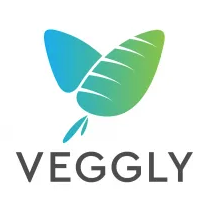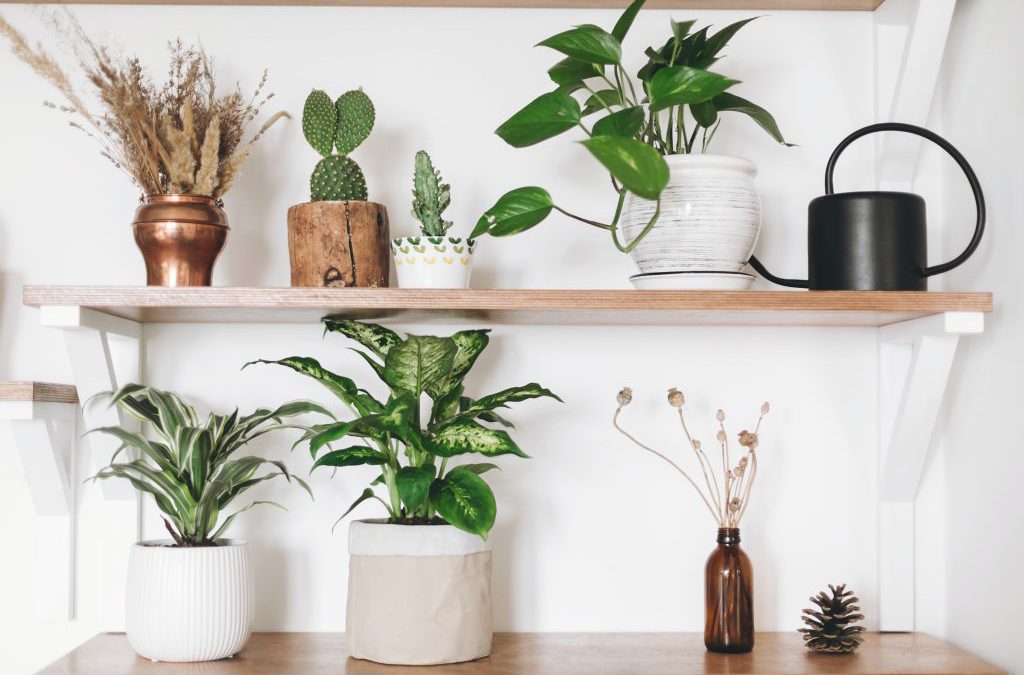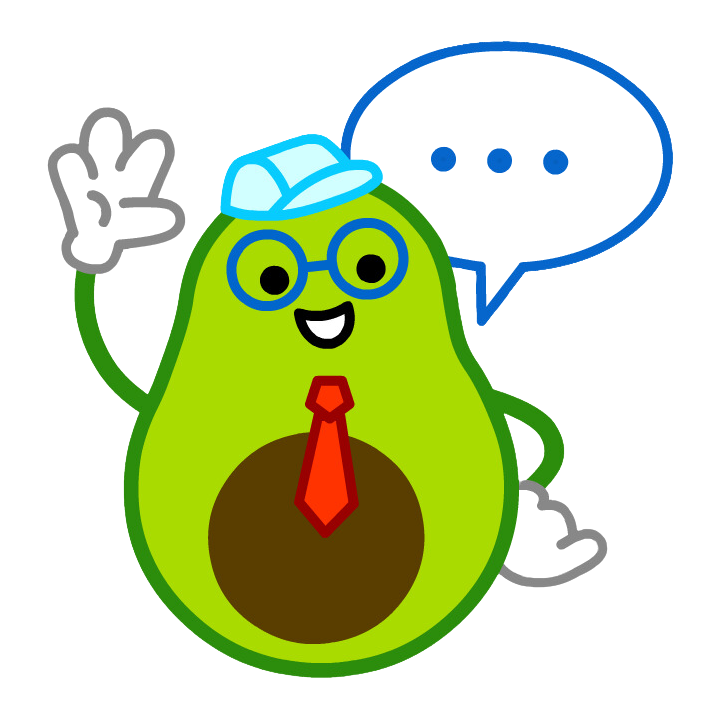Choosing a vegan lifestyle is not only about your dietary preferences; committing yourself to a genuinely vegan and cruelty-free lifestyle extends to all other areas of your life, from beauty and personal care products, fashion items like shoes, bags, and clothes, cleaning supplies for the home, furniture and home decór, since animal products happen to be found in a number of things you may not even imagine, and even when products can be vegan, which means that they don’t contain animal products, they may have been tested on animals, which is why it’s important to go for cruelty-free options as well.
If you want to know more about the basics of how to go vegan and have a truly committed vegan and cruelty-free lifestyle at home, keep reading to learn what the experts told us.
As a new vegan, what are the staple foods that should never be missed in your pantry?
Nutritional Yeast – Fortified nutritional yeast is an essential vegan pantry staple making sure you get enough vitamin B-12, naturally found in meat. Often referred to as ‘nooch,’ it can be an acquired taste that adds umami and ‘cheesy’ flavor to your meal. It can be stirred into recipes towards the end of cooking. Or try sprinkling it over the top of pizza, salads, soups, pasta dishes, etc. I recommend starting with a small amount, adding more as you get used to this savory ingredient.
Cashews – When you’re looking for dairy alternatives, raw cashews work wonders in everything from vegan mac and cheese, vegan queso and alfredo, cashew ricotta, vegan cheesecake, vegan cream, and more. Those who are free of nut allergies will benefit from adding this versatile nut to your pantry. They blend up creamy smooth in seconds with a quick soak, and you will never miss dairy again!
Legumes – Whether dried or canned, stocking a variety of legumes such as lentils, beans, and peas is a must. They are extremely versatile and the main protein in a vegan diet. Not only are they inexpensive and extremely versatile, but legumes are also low in fat, high in protein and fiber. Plus, they carry essential micronutrients and phytochemicals to keep you at your best.
Spices – Although they are not really a food, having a good assortment of spices on hand will enhance your plant-based meal. I love the simplicity of simple salt and pepper, but spices and herbs can make all the difference and make your recipe come alive. I recommend sourcing the freshest dried spices and using fresh herbs whenever possible.
-Julie West from The Simple Veganista
What kind of vegan options can we have at home as meat substitutes that provide the proteins required?
The first thing that people need to know is that most of us eat too much protein, and unless you are only eating vegan junk foods, the likelihood of you not getting enough protein is slim to none.
Please check out this video (from 2014) by Dr. Michael Gregor in which he answers the question: “Do vegetarians get enough protein?”. As he states in the video: The average requirement is 42 grams of protein a day. Non-vegetarians get way more than they need, and so does everyone else. On average, vegetarians and vegans get 70% more protein than they need every day. Dr. Gregor also has a great cookbook: The How Not to Diet Cookbook.
Another good online resource for vegan protein can be found in this Comprehensive Chart of Vegan Protein Sources
So – what vegan options can you eat at home?
- Home-made bean burgers
- Home-made veggie burgers
- Tofu
- Tempeh
- Seitan
- Grains
- Nuts
- Seeds
- Non-dairy milks
- Fruits and Vegetables – all contain protein
Store bought meat substitutes (burgers, sausages, chorizo, deli slices, crumbles, etc.) from the following companies:
- Tofurkey
- Beyond Meat
- LightLife
- Impossible Foods
- Field Roast
- Sweet Earth
- Morningstar Farms
- Gardein
- And so many more
And with so many vegan recipes available online, it’s easy to find exactly what you’re looking for. Hope this helps you on your journey to a more compassionate and healthier way of eating.
-Gita Devi from The Ginger Cat B&B
In your experience, what are the Do’s and Don’ts when someone starts to adopt a vegan lifestyle?
“Taking the first step is always the hardest”, but becoming vegan has never been easier than it is right now. So many new options – buying food, dining out, clothes, personal care items, sources of information etc. Everything points to an easier lifestyle than ever before.
What can I eat? – Meat, milk products, eggs, seafood, it’s easy to think that your diet will be seriously limited, but this is simply not true. Most peoples’ diets are very limited by what they choose to base their meal options around. There are a vastly larger number of fruits and vegetable options to base your meals on than animal-based options. Also, for an easy transition, there are also a huge number of faux-products – meat substitutes, dairy-free milks, cheeses, pastries, and ice-creams. You don’t have to forego your fave dishes because these days there are plant-based replicas. It’s just a case of finding the shops and outlets where you can buy them from. And it’s the same with dining out – the hardest part is getting started. Once you familiarise yourself with the local vegan-friendly options, you will find that you can eat at most places, and maybe you just do should not want to support places that do not cater at all to vegans. If you find yourself really short of options, try Italian, Indian, Chinese restaurants – you can always find a few options in these places.
Important foods for vegans – everyone needs to consume essential minerals, vitamins, and other components to ensure optimal health, and vegans are no different. Thankfully a well-planned vegan diet lends itself very well to good health. Most dieticians recommend only a vitamin B12 supplement for vegans since modern living has stripped food of this essential item. However, often vegan-friendly milks, margarines, cheeses, yogurts, even cereals will be fortified with B12. Other vegans take vitamin D supplements if they live in less sunny climes. Yet others take fatty acid supplements, however, studies indicate that most people can synthesize what they need. But the truth is that everyone should follow a healthy diet and you might find that your own supplement requirements are different. You can find many recommended vegan nutritionists online to allay any concerns.
How to tolerate the talk – Being vegan can be very challenging, especially when it comes to the thoughts and reactions of non-vegans, whether they be friends, family, co-workers, or just people you meet. Chances are you will be ridiculed, warned about your health by self-appointed “health experts”, treated to attacks from home-spun irrational philosophers, even ostracised. And the crazy thing is that this is usually from the most ignorant.
The trick is to be prepared. Dealing with these issues is challenging at the start, but the more often you address them, the more confident you will become. You will soon recognize the most familiar lines and build up your own stock answers to them. Remember that science and philosophy are on your side. There are plenty of online resources to help you, including vegan Youtube channels. And try to adopt an engaging and positive approach wherever possible because you are now an advocate for doing the right thing.
Staying the course – Making the transition can appear daunting but do not despair; you are not alone. There are more like-minded vegans than you might imagine, wherever you live. “A problem shared is a problem halved”, so get involved in on-line vegan communities such as Facebook or forums, or join local vegan clubs. And if there isn’t one, start one!
-Sheldon Hey from Vegan SA
What are the benefits of a vegan diet on our overall health?
In a socio-cultural and economic environment, with large-scale publicity aimed towards influencing the consumption of products and, as consequence, diets, we grow up with the idea that we need animal products such as meat and milk to achieve good health and, many times, social status. However, a strictly vegetarian diet is filled with all the nutrients our bodies need and is scientifically proved to be effective in keeping the body healthy at any stage of a human being’s life.
There are many studies that report the benefits of being vegan and following a plant-based diet. This kind of diet tends to offer more fibers, antioxidants, as well as being even richer in potassium, magnesium, and vitamins A, C, and E.
According to the American Heart Association, this type of diet is also effective at preventing cardiac diseases. A study was carried out by the association with 100 participants with pre-existing heart conditions to rate the performance of heart functions for patients with omnivorous and vegetarian diets. The vegetarian diet was shown to significantly reduce systemic inflammation and improved the lipid profiles for the patients, while this wasn’t the case for those with an omnivore diet.
Among other benefits of being vegan is the potential to reduce risks for some types of cancer. Regularly eating vegetables may reduce the risk of cancer by 9 to 18%. Among the cancers that we can reduce the chances of risk, we have prostate cancer, colon cancer, and breast cancer.
It can be observed that plant-based living is not only healthy and diverse but can also help us live better and longer.
-Alex Felipelli, Founder and CEO at Veggly
How do you know when a beauty product is cruelty-free? What should we be looking for?
First, check to see if the beauty brand is listed on Leaping Bunny’s Cruelty-Free List or PETA’s Beauty Without Bunnies List. You can also check my cruelty-free brands list. If the brand is in either of these three spots, great! It’s easy to tell they’re cruelty-free.
If it is a smaller brand, such as an indie brand like Necromancy Cosmetica, Fyrinnae, or Sydney Grace Co, you’ll want to check their FAQ page or about page to see if they list their cruelty-free status. Most indie brands will be very transparent. Necromancy Cosmetica, for example, states that their lipsticks are made with 100% vegan materials that have never been tested on animals.
If a brand isn’t on Leaping Bunny’s, PETA’s, or my cruelty-free list, and they don’t have the details in their FAQ page, you’ll need to email them.
The questions I typically ask a new brand now are as follows: (these questions were created with my bestie Jen from My Beauty Bunny
1. Is your company certified by Leaping Bunny/CCIC?
2. Are the products vegetarian? (no animals killed for the products – i.e. some forms of collagen, squalane, etc.)
3. Are the products vegan? (i.e. product ingredients that come from animals like lanolin, honey, milk, etc.
- Are the finished products tested on animals by the company, a parent company, a third party or an affiliate company?
5. Are the products tested on animals during the production process by the company, a parent company, a third party or an affiliate company?
6. Do you have documents from your ingredient suppliers to show that they are not testing on animals for your brand or any other brand?
7. Does your manufacturer purchase any ingredients from laboratories that conduct tests on animals? Do you have documents to support this?
8. Are the products sold in any markets where animal testing is required by local law and regulations (China, etc)?
9. If the products are sold in China, please explain how you are avoiding pre-market testing (are you aligned with PETA or Leaping Bunny)?
The information you’re looking for is whether or not the brand tests on animals or if the brand contracts out to their manufacturers/suppliers/a third-party vendor for animal testing.
-Courtney, founder of Phyrra
What kind of materials should we look to incorporate in our home to make it vegan and cruelty-free?
- Decorative Pillows:“Covers made from linen, bamboo, and organic cotton are healthier alternatives to leather and wool. They are free from harmful chemicals, vegan, and super soft.”
- Pillow Inserts:“Consider rubber, kapok, or buckwheat fill for your decorative pillows instead of foam. These fills, unlike foam, are completely organic and free from off-gassing (the harmful chemicals that foam releases). They are also vegan.”
- Sofa Cushion Filling:“When a sofa, for example, is touted as faux, make sure you check the fill. The upholstery can be a faux leather or velvet. However, the foam cushions underneath can be wrapped in feathers or down.”
- Comforters and Blankets:“How yummy to wrap yourself in a soft thick cotton, bamboo, or faux fur blanket. These are much healthier, kinder options that contain less chemicals than a wool or down-filled blanket.”
- Rugs:“I’m a fan of cotton, hemp, jute, and sisal. They are affordable, organic, and have fewer chemicals than wool or silk rugs. Plus, there are endless styles and patterns that are non-animal based.”
- Printed Fabrics:“Printed fabrics are beautiful and come in endless prices and styles. Try to find fabrics that use natural dyes that are either vegetable or water-based.”
– Deborah DiMare, founder of VeganDesign.Org
What tips can you give us to start a vegan lifestyle and actually stick to it?
Our Top 10 Tips to Get You Started
- It’s all in the planning!
Don’t wake up on the first day of your vegan adventure without having thought about what you might eat! That is the absolute quickest way to fall off the wagon. Ahead of time, have a think about your first day’s meals and buy plant milk for your breakfast and coffee or tea, some dairy-free butter for toast or sandwiches, and something tasty for your dinner.
Some people find making a weekly meal planner helpful, so they always know what they need to shop for and what they will be eating.
- Look out for accidentally vegan foods
There are so many everyday foods that just happen to be vegan, so open up your cupboard and take a look. Pasta, rice, peanut butter and Marmite, most breads, tinned tomatoes, chickpeas and kidney beans, jam and marmalade, coconut milk, curry pastes, tomato puree, baked beans, many crisps, crackers and biscuits, herbs and spices, many gravy granules, tea, coffee and fruit juice… There is a good chance that half the foods you already eat are vegan!
- Ease yourself in
There is no need to reinvent your whole eating habits. If you like a sausage sandwich, have one – just make sure the sausages are vegan. If you want ice cream, go ahead. There are dozens of different delicious flavours out there. You can have almost everything you had before in a vegan version, so just switch like for like.
- Veganise your favourite dishes
Again, there is no need to adopt a whole new eating regime. If your signature dish is lasagne, make a vegan version with soya mince and plant milk for the béchamel. If you love a morning fry-up, you can make it with vegan bacon and sausages. Whether you cook curries, casseroles, soups, stews, pies and pasties, roast dinners, cakes, desserts or anything else, simply veganise it.
- When you’re ready, branch out
Many people find that becoming vegan opens up a whole new world of recipes and ingredients, and rekindles their love of great food. Once you’ve got the hang of the basics, why not jump in and try some brand-new recipes (there are thousands online) and see if it ignites your culinary passions.
- Keep snacks to hand
Don’t get caught out! It’s really easy to pick up vegan snacks in most places but not everywhere, so make sure you keep a bag of nuts, a chocolate bar or some fruit in your bag or car just in case.
- Persistence pays
Not every vegan product will work for you but just because the first cheese you try or the first latte you make doesn’t hit the spot, don’t rule out all other cheeses and plant milks. There are so many different ones to try – cream cheese, melty cheeses, nut-based, coconut-based, soya-based, all flavours and lots of different brands and styles; and as for milks, you’ll find oat, hemp, almond, coconut, rice and soya. Try them all, and you will soon find your perfect match.
- HappyCow
Like eating out? Download the HappyCow app onto your phone and let it guide you to your nearest restaurant, café or shop where you can find vegan food wherever you are in the world.
- Find your tribe
It’s easy to feel isolated as a new vegan but there are millions of us out there. Find your local vegan meetup group and make like-minded friends in real life or search online for vegan groups that interest you. From vegan runners to bakers to knitters; from vegan weightlifters to fashionistas to activists. They’re all there waiting for you.
- Be kind to yourself
Everyone makes mistakes. Whether you ate something non-vegan accidentally or simply gave in to temptation, it’s OK. It doesn’t mean you are no longer vegan; it just means you are human! Chalk it up to experience and move forward.
-Toni Vernelli from Veganuary
What mistakes should be avoided when transitioning to a vegan lifestyle?
First things first – don’t be too hard on yourself. Some people find it easier than others to give up animal products completely from day 1, but others may go back to their normal eating habits from time to time, and both are ok; that’s just part of the process. Don’t beat yourself up for “not doing it right”.
Next, try to avoid vegan junk food. Most people think that just by being vegan, you’re automatically healthier, but that’s definitely not the case if your daily meals just consist of burgers and pizza. I highly recommend you do your research and have lots of healthy vegan recipes on hand to experiment with. Personally, I’m a fan of adding at least 50% raw food into your daily meals as that gives you lots more nutrition. Try dividing your plate in half – fill half your plate with something cooked and make the other half a salad.
Lastly, don’t worry about protein and calorie counting. It is very easy for a vegan diet to meet the recommendations for protein. In fact, vegetarians and vegans actually average 70% more protein than they need every day. Just make sure you have plenty of variety, listen to what your body needs (not craves!) and enjoy your food.
-Anya Andreeva, founder of Live Love Raw and author of “How To Be A Raw Foodie”.
What recommendations can you give us to raise vegan children?
Raising vegan children can come with a set of unique challenges for parents. Talking to children about veganism from an early age can be a daunting task. Especially as reasons for being vegan are not always kid-friendly. However, it’s important to be transparent with your child about why your family is vegan, even if it’s a little uncomfortable at first. There are a lot of resources out there from vegan children’s books to vegan subscription services like Vegancuts. After all, as a parent, you never want your child to feel like they are “missing out”. At Vegancuts we curate 100% vegan snack boxes each month to showcase the very best vegan products on the market. Embracing fun experiences like subscription boxes go a long way to ensuring your kids don’t feel “left out” – and who knows, it might even make their friends jealous!
-Jase Quelch, Vegancuts Content Manager
Why is it important for vegans to supplement with B12 vitamin? Why is this necessary?
Vitamin B12 used to be found in the soil where we farm our food. But over the centuries of over-farming, our soil is mostly barren of naturally occurring B12, which leaves no plant-based sources of it (although it’s worth noting that B12 deficiency rates are about the same in both vegans and non-vegans alike). B12 is a very important vitamin, and deficiencies can have symptoms ranging from sluggishness all the way to irreversible brain damage! A deficiency can take years to develop, as we can store it in our livers for 3-7 years, so even if you haven’t supplemented for years and your blood tests are fine now, it doesn’t mean that they will be down the line. With vitamin B12 supplements being so affordable and readily available, there is no reason not to take the supplement and stay healthy — vegan or not.
– Dani Taylor, Vegan Strong Assistant Tour Director, Author, Vegan Strength Coach, and Natural Bodybuilding Athlete
As you can see, nowadays, you can find vegan options for almost everything you need to move forward to a fully vegan and cruelty-free lifestyle. As more of us choose this way of living, more products will be offered in the market to cover all the needs of this growing trend all over the world.
Originally posted on Porch.com
Don’t miss the Veggly Blog
So there you have it!
As Veggly grows further, make sure you subscribe to our blog and stay up to date with all of our announcements, other news stories, blog posts, and recipes.
Please follow Veggly across our social channels:





